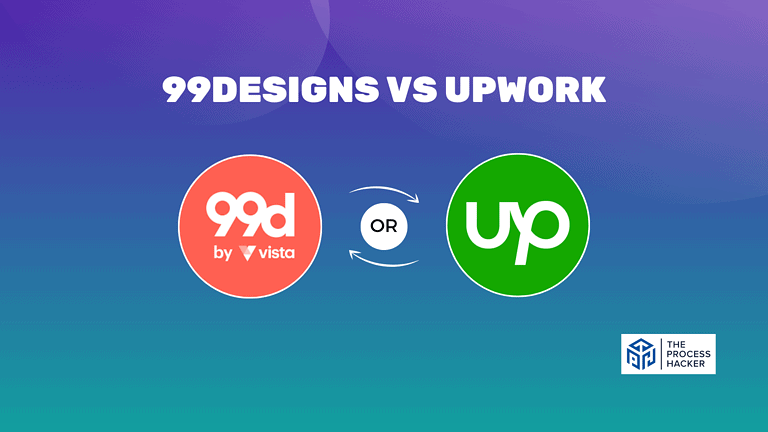How to Run a Meeting: 10 Proven Strategies for Successful Meetings
Did you know that unproductive meetings cost U.S. businesses an estimated $37 billion annually? It’s time to turn that statistic around and start making your meetings work for you.
We’ve all been stuck in meetings that seem to drag on forever, accomplishing absolutely nothing. It’s frustrating, unproductive, and wastes everyone’s valuable time.
But what if meetings could be different? What if they were engaging, productive, and achieved their intended goals?
The truth is, they absolutely can be. Running a successful meeting isn’t rocket science but requires some planning, preparation, and the right approach.
In this blog post, we’ll share 10 proven and effective meeting strategies that will help you transform your in-person meetings from time-wasters into productivity powerhouses.
What is an Effective Meeting?
An effective meeting is one in which each objective is clear, the participants are engaged, and the outcomes are actionable. At its core, a successful meeting should achieve its intended purpose while respecting everyone’s time.
Understanding the dynamics of meetings is crucial in today’s fast-paced work environment. It ensures that every meeting drives progress, supports decision-making, or fosters better team collaboration.
Why You Should Master the Art of Running Effective Meetings
Mastering the art of meeting management can significantly enhance your productivity and your team’s morale. Here’s how:
Boosts Productivity
Well-run meetings keep everyone aligned on project goals, reducing the need for follow-up meetings and speeding up project timelines. Establishing clear objectives, agendas, and action items ensures everyone is on the same page, minimizing confusion and miscommunication. Efficient meetings enable quicker decision-making, empowering your team to move forward confidently.
Enhances Team Morale
Productive meetings that value everyone’s time and contributions improve team satisfaction and cooperation. When individuals feel heard and respected, they’re more likely to participate and contribute their ideas actively.
Creating an inclusive environment where diverse perspectives are welcomed fosters a sense of belonging and collaboration. This leads to improved teamwork, increased motivation, and improved outcomes.
Benefits for Leaders
Effective meetings are tools for better decision-making, team alignment, and resource management for entrepreneurs, business leaders, and small businesses. Gathering key stakeholders allows you to tap into collective intelligence, weigh different options, and arrive at informed decisions.
Well-structured meetings also serve as a platform to share critical information, clarify expectations, and delegate tasks effectively. This streamlined communication ensures everyone works towards the same goals, optimizing resource allocation and minimizing wasted efforts.
Leadership Development
Sharpening your meeting management skills positions you as an effective leader capable of guiding teams through complex projects and strategic pivots. By demonstrating strong organizational skills, the ability to facilitate productive conversations, and a commitment to valuing everyone’s time, you build trust and respect among your team members.
This fosters a positive work environment where individuals are motivated to perform at their best. Moreover, your adeptness at navigating discussions and resolving conflicts showcases your leadership capabilities, inspiring confidence and loyalty from your team.
By embracing these strategies, you ensure that every meeting serves its purpose and strengthens your team and leadership. Let’s explore these proven strategies to turn ineffective meetings into a powerhouse of productivity and decision-making.
How to Run a Successful Meeting Like a Pro: The 10-Step POWER Method
Running a successful meeting can be straightforward when you follow the 10-Step POWER Method. This method will make your meetings more productive, engaging, and impactful. Let’s break down this structured approach that ensures every meeting you conduct is optimized for success.
P – Prepare with Purpose
Every successful meeting starts with clear objectives. Before you gather, know exactly what you aim to achieve. This clarity will guide the meeting flow and help keep discussions on track.
Preparation is key, so develop a detailed meeting agenda that outlines the topics to be discussed, allocates time for each item, and highlights the meeting’s objectives. Distribute this agenda well in advance to give participants enough time to prepare.
Only some people need to be in every meeting. Select participants who are crucial to the conversation. Also, decide on the meeting format that best suits the agenda—whether it’s in-person, online, or hybrid—to maximize participation and effectiveness.
O – Open with Energy
Thorough preparation sets the stage for a productive meeting. Start by clearly defining the meeting objective or objectives. Ask yourself, “What do we want to accomplish by the end of this meeting?” Ensure these objectives are specific, measurable, achievable, relevant, and time-bound (SMART).
For the next meeting, craft a detailed agenda and share it with participants well in advance. Your agenda should outline the topics to be discussed, the allotted time for each, and any preparatory materials attendees need to review.
Finally, select the right participants and meeting format. Invite only those individuals whose presence is essential to achieve the meeting’s objectives. Consider the nature of the discussion and the availability of participants when choosing between in-person, online, or hybrid formats.
W – Watch the Clock
Time is a precious commodity in any meeting. Employ effective time management techniques to ensure your meeting stays on schedule and achieves its objectives efficiently.
One effective technique is time-boxing. Allocate a specific amount of time for each agenda item and stick to it. This prevents discussions from dragging on unnecessarily and ensures all topics receive adequate attention.
To keep discussions on track, actively facilitate the conversation. Gently steer participants back to the topic if they stray off course. Encourage concise contributions and avoid letting one or two individuals dominate the discussion.
By staying mindful of the clock and proactively managing time, you’ll demonstrate respect for everyone’s schedules and ensure your meetings are both productive and efficient.
E – Encourage Participation from Meeting Participants
A successful meeting thrives on active engagement from all attendees. Foster an inclusive environment where everyone feels comfortable sharing their ideas and perspectives.
Start by creating a safe space for open communication. Set a positive tone, actively listen to each participant, and acknowledge their contributions. Encourage constructive feedback and avoid any form of judgment or criticism.
For quieter participants, use gentle prompts and open-ended questions to draw them into the conversation. You might ask, “What are your thoughts on this?” or “Do you have any insights to share?”
On the other hand, dominant personalities should be managed tactfully. Acknowledge their contributions but also ensure everyone gets a chance to speak. You might say, “Thank you for sharing, [name]. Let’s hear from some others on this point.”
By proactively encouraging participation and ensuring everyone’s voice is heard, you’ll tap into the collective intelligence of your team and foster a sense of ownership and collaboration.
R – Recap and Assign Action Items
As your meeting draws close, it’s crucial to recap the key decisions and takeaways. Summarize the main points discussed, highlighting any significant agreements or action items. This helps solidify everyone’s understanding and prevents any misunderstandings.
Next, assign clear next steps and responsibilities. Articulate who is responsible for each action item, what needs to be done, and when. This ensures accountability and prevents tasks from falling through the cracks.
Set deadlines and establish follow-up mechanisms. Determine when you’ll check in on progress and how you’ll track completion. This could involve scheduling a follow-up meeting, sending reminder emails, or using project management tools.
By providing a clear roadmap for moving forward, you’ll ensure your meeting’s momentum continues, and its objectives are achieved efficiently.
Key Considerations for Successfully Running Meetings
The work landscape has evolved significantly, particularly with the rise of hybrid and remote teams and team leaders. To ensure your scheduling meetings remain effective and beyond, consider these key factors:
Adapting to Hybrid and Remote Meeting Environments
Embrace technology that seamlessly bridges in-person and remote meetings. Choose platforms for video meetings that offer high-quality audio and video, ensuring everyone can see and hear each other.
Utilize features like screen sharing to present information visually and virtual whiteboards for interactive brainstorming and collaboration. Ensure the technology is user-friendly and accessible to all participants, regardless of their technical proficiency.
Leveraging Technology for Enhanced Collaboration
Explore various tools beyond online meetings to facilitate communication and streamline decision-making.
Project management software like Notion can help track tasks, deadlines, and progress, keeping everyone aligned. Shared document editors like Google Docs or Microsoft Office 365 enable real-time collaboration on documents, spreadsheets, and presentations.
Real-time polling tools can gather instant feedback and gauge consensus on important decisions. By leveraging these technologies, you create a dynamic and engaging environment that fosters participation and productivity, especially for remote team members.
Addressing Diversity and Inclusion in Meetings
Create a welcoming environment where everyone feels comfortable contributing their unique perspectives. Actively encourage open communication, inviting individuals to share their ideas and opinions without fear of judgment. Actively listen to all participants, demonstrating genuine interest in their contributions.
Be mindful of cultural differences, adapting your communication style and approach as needed. Foster a culture of respect and inclusivity, ensuring everyone feels valued and heard. By embracing diversity and creating an inclusive meeting environment, you tap into a broader range of perspectives and ideas, leading to more innovative and effective solutions.
Taking it to the Next Level: Get Fireflies.ai
Fireflies.ai is an AI meeting assistant that can help you transcribe, summarize, and analyze your meetings. It integrates seamlessly with popular video conferencing platforms and can automatically generate action items and follow-up tasks. This powerful tool saves you time and ensures no valuable insights are lost.
Alternatives to Traditional Meetings
Traditional meetings may not be the most efficient way to achieve your goals. Consider these alternatives:
Asynchronous Communication Tools and When to Use Them
Leverage asynchronous communication tools for routine updates, simple questions, or sharing information that doesn’t require immediate discussion. Email remains a reliable option for formal communication and documentation.
Instant messaging platforms like Slack or Microsoft Teams offer real-time communication for quick questions or informal updates. Project management tools provide a centralized platform to track progress, assign tasks, and share files.
Utilizing these tools empowers team members to manage their time effectively, reducing unnecessary interruptions when a person talking is having important discussions and enhancing focus on individual tasks.
Stand-Up Meetings and Other Quick-Fire Alternatives
Stand-up meetings offer an efficient solution for quick check-ins, progress updates, or addressing minor roadblocks. These short, focused gatherings, typically held standing up, encourage concise communication and prevent discussions from veering off track.
Other quick-fire alternatives include virtual huddles or brief one-on-one check-ins to address specific issues or provide personalized feedback. These streamlined formats keep everyone informed and aligned without sacrificing valuable time.
The Rise of AI-Assisted Meeting Assistants
Embrace AI’s potential to revolutionize your meetings. Explore tools that leverage artificial intelligence to transcribe conversations in real-time, capturing every word and nuance. AI can also help identify key topics and generate concise summaries, saving you the time and effort of manual note-taking.
Additionally, AI-powered sentiment analysis can gauge participants’ overall mood and engagement, providing valuable insights to improve future meetings. Incorporating AI into your meeting facilitation can streamline processes, enhance productivity, and foster a more engaging and inclusive experience for all attendees.
For example, you can use tools such as Fireflies.ai, Otter.ai, and Krisp to transcribe conversations and automate note-taking. These tools also offer features like keyword search and highlight, making it easier to find relevant information during post-meeting follow-ups.
I personally use Fireflies with my team to ensure we capture and retain all critical details from our discussions. It has saved us time and improved our overall meeting effectiveness.
Final Thoughts on Running Successful Meetings
Running successful in-person and remote meetings is an art and a science.
It requires thoughtful planning, effective communication, and a commitment to creating an inclusive and productive environment. By implementing the POWER method and embracing the key considerations and ground rules outlined in this article, you’ll transform your meetings from mundane gatherings into dynamic sessions that drive results.
Remember, the success of your meetings directly impacts your productivity, team morale, and overall organizational success. By mastering the art of meeting management, you position yourself as a capable leader, inspiring confidence and fostering a culture of collaboration and innovation.
In today’s fast-paced world, time is a valuable commodity. Don’t let it slip away in unproductive meetings. Invest in honing your meeting skills, and you’ll reap the rewards of a more engaged, motivated, and high-performing team.
So, the next time you schedule a meeting, remember the POWER method and these key considerations. With a little effort and the right approach, you’ll be well on your way to running successful meetings that achieve their objectives and leave everyone feeling energized and inspired.







